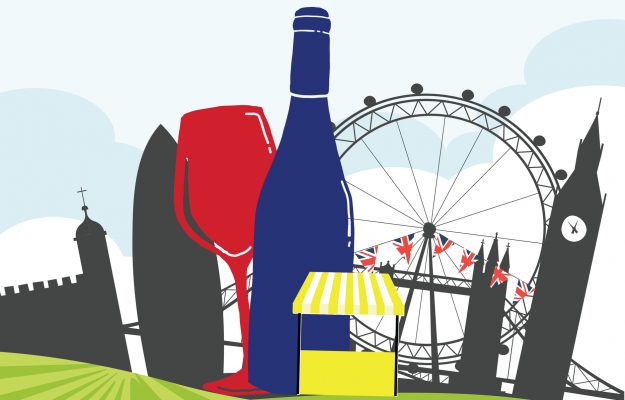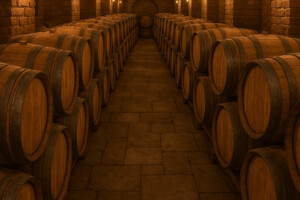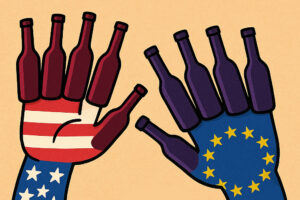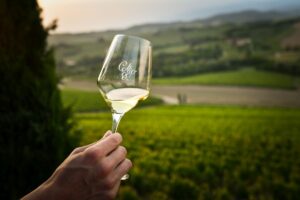WineNews interviewed Patrick Schmitt, Master of Wine, and editor-in-chief of “The Drinks Business” in London at the IEM event (by Marina Nedic and Giancarlo Voglino), Simply Italian Great Wine. He was trying to understand where the British wine market will be going over the next few months. He painted a complex, gloomy picture that Italian wine will have to deal with. He said, “it is difficult to measure the effects of the current economic situation on consumption, but people’s purchasing power will soon have to deal with rising inflation, the cost of energy and the cost of living, as well as probably a rise in unemployment. What does this mean for wine? When one has less money to spend it means you have to prioritize yourself, and wine is still considered a luxury — even though it is a daily one — especially at the table. What will happen is that the consumer will inevitably look for cheaper bottles, and there will probably be a drop in profits for the wine market. The other problem I see is the impact on wine sold in restaurants, which is one of the first sectors where people will cut costs. Drinking outside the home is expensive in Britain, so I imagine a similar picture to the one experienced during the Pandemic. Consumption of wine and other spirits will move back within the walls of the house, and people will go out less. This means that wine sales on the shelf (retail and mass market retailers) as well as on e-commerce, will grow”.
“In the case of the many Italian wines that enjoy great success on restaurant tables, I imagine there may be some concern. When we look instead at mass retailers, the offer is generally more limited, especially compared to specialized distributors. There is even less choice in the offer we find on e-commerce, mainly because the offer includes wines from all over the world, and therefore Italy represents only a small part. The retail channel is different, because Italian wines are”, Patrick Schmitt continued, “extremely popular. The British love Italy and its culture, and have finally returned to travel to Italy. We are among the largest consumers in the world of two iconic productions: Pinot Grigio and Prosecco. They are two wine types that have been able to overcome this moment unscathed, but they are not the only ones. I am thinking of a segment dominated by Provence, rosé wines, and the prices are now growing dramatically, at more than 20 Sterling pounds per bottle, because of the increase in demand from the United States. And then, there is Chianti Classico, certainly not a novelty, but a wine that always offers great certainty to British consumers”.
We cannot underestimate yet another aspect, which is the strength of Italy’s competitors in the UK, because “the competition is not only with France, but also with Spain, at least in the red segment. They have done an extraordinary job on their Rioja wines, which have excellent positioning everywhere, from pubs to restaurants to supermarket shelves, placed right between Bordeaux and Chianti Classico. Australia has always been strong on the UK market, and historically it is our number one supplier. We are not talking about great wines, but about productions that have a great quality / price ratio, especially Syrahs. Taking into consideration the problems they have had with China, but also a free trade treaty with Great Britain on their side, they have the opportunity to grow. However, our market, in the entry level category, is still saturated and very competitive. For many years, growth has only been in terms of value, driven by quality wines and fine wines. It is no coincidence that London is the main International hub for the fine wine market. In terms of volumes, however, the slow decline in consumption began well before the current economic situation”, the editor-in-chief of “The Drinks Business” concluded.
The picture of the present is challenging, while the future has yet to be written, and it will be important to do it steeped in a good amount of optimism. As the Master of Wine, Patricia Stefanowicz, said, “there is a great future for Italian wines in Great Britain. They are food friendly, and there are a large number of types. I see Sicily, and not just Mount Etna, which at the moment is in the foreground, on the launch pad. There are many delicious Nero d’Avola wines, for instance. And then, there is Chianti, which people continue to love, also because of its affordable price. Plus, there’s Vernaccia di San Gimignano, another magnificent wine. There is still room for Pinot Grigio, especially from Trentino Alto Adige, as well as the sparkling wines of Trentodoc and Franciacorta, which are less expensive than Champagne, while still elegant. In addition these, there are the red wines of Piedmont, such as Dolcetto, Barbera, and Nebbiolo delle Langhe. The 9 to 15 Sterling pounds per bottle segment on the shelf is the most important, and Italy has all the numbers to be competitive in any wine typology, from white wines, like Grechetto, Fiano and many others, to red wines, like Primitivo, which people know and appreciate, as they have been drinking the same wines produced in California for decades. Another important aspect is that the wines go well at the table, not necessarily just Italian dishes, but any type of cuisine”.
Those who sell the wine, instead, see the many different nuances on the UK market, as placing a great Tuscan red wine or a Classic Method makes all the difference in the world. In the case of a reference brand from Franciacorta such as Ca’ del Bosco, “the English market is qualifying and positioning, it has been able to give great value to what matters over the years. We do not need to sell everywhere. The goal is to add value, so we try to reward those who reward us, and this is where Great Britain is fundamental, especially the on-trade and not necessarily starred level catering”, Luca Cinacchi, Ca’ del Bosco Key Account Manager Europe, explained. Tamara Maccherini, Tasca d’Almerita Commercial Director, said, “the British market is a reference point, and over the last 25 years many things have happened, like Brexit. Beyond the numbers, at this moment there is quite a bit of fear for the future. It is essentially an on-trade market for us, which so far has held its own, continuing along the path of consumption premiumization. In our case, for instance, there is more attention to Etna. Inflation is scary, and there is a danger it will lead to a decline in imported volumes; however, we expect constant growth in value”. As Emanuele Barrasso, Antinori UK Brand Ambassador told us, “Italian wine plays a fundamental role in the on-trade channel, especially in catering. Following the Covid emergency and lockdowns, people wanted to go back to their usual habits, which led to a real revival, that has continued in 2022. According to Marchesi Antinori, England is a fundamental market, their ambition is to grow again all the 16 Italian Estates of the Group, by telling the stories wine by wine, starting from the Villa Antinori wines, the most widespread on mass market retail. And then, obviously, the great wines, such as Tignanello, Solaia and Brunello di Montalcino Pian delle Vigne, as well as Chianti Classico from Badia a Passignano, which we hope will do even better in the future”. Finally, Peter Ferguson’s opinion, who is the reference point of the Frescobaldi family in Great Britain, especially for the production of Tenuta Luce and the Friulian Attems. He said, “the market is facing a very complicated moment in the UK and all over the world. Catering will be the first to pay the consequences. However, people still want to enjoy their favorite wines, which means going back to retail, as we saw during the Pandemic, where in the end, alcohol consumption did not suffer any decline. The main problem concerns the cost of energy, which is causing inflation to soar across Europe, while wages remain stationary, and therefore choices have to be made. In certain areas of consumption we will see significant drops. I am referring to low-priced productions, while quality wines will be able to defend themselves. The tendency is to drink less, but better, so in the end I feel optimistic”.
Copyright © 2000/2025
Contatti: info@winenews.it
Seguici anche su Twitter: @WineNewsIt
Seguici anche su Facebook: @winenewsit
Questo articolo è tratto dall'archivio di WineNews - Tutti i diritti riservati - Copyright © 2000/2025








































































































































































































